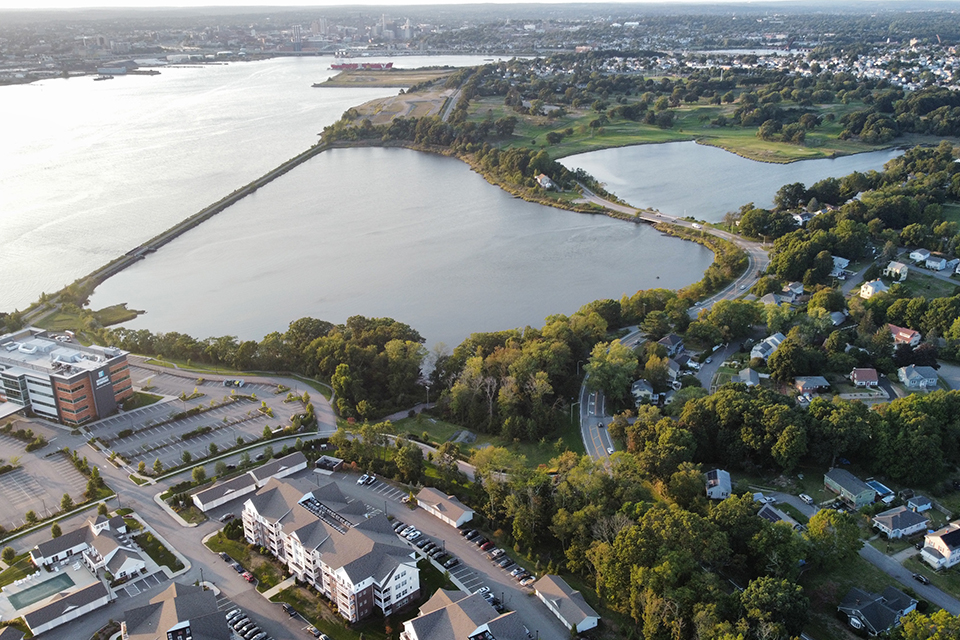Themes
Diminished or Threatened Connectivity
Connectivity is equity. Connectivity is the liberty to move freely within and between landscapes and their physical settings. Connectivity is unfettered access for all and the ability to participate in dedicated communal public space. Connectivity was a core value of Frederick Law Olmsted, Sr., and his successors, as demonstrated in hundreds of projects throughout the nation. Neighborhood parks and park systems were created to be places for easy and unfettered access, also serving as the connective tissue within and between neighborhoods.
 Veterans Memorial Parkway, 2022. Photo by Dereck Mendoza.
Veterans Memorial Parkway, 2022. Photo by Dereck Mendoza.
Loss of connectivity can result in separation and segregation. The Shattuck Hospital site at Franklin Park in Boston, MA, and the highway along the western edge of Washington Park in Milwaukee, WI, create physical barriers that separate sections of each park from the respective neighborhoods they were intended to serve. In the most extreme form, highway construction and confiscated parkland have destroyed whole neighborhoods and created de facto racial segregation. Reconnecting neighborhoods and parks provide opportunities for healing and reconciliation, socially, culturally, and physically.
Public access to public land extends beyond the actual land to the sky and skyline, and the viewsheds, all of which provide context for the cultural landscape and the opportunity to visually engage with what lies beyond. The privatization of viewsheds, such as those along the Veterans Memorial Parkway in Providence, R.I., through conventional development and construction, severs the parkway’s connection with the contextual setting that Olmsted was embracing as a shared civic amenity and the intentional experience of a “pleasure drive." Meanwhile, the Olmsteds’ design intent using porous borders at Seattle’s Parks and Boulevards System ensured easy access to parkland; today, erosion of the system of boulevards adversely impacts that goal.
When connections are severed, preventing freedom of movement into and within parks, the result is an immediate limitation on access for all—whether those spaces are given over to an ancillary use (i.e. a hospital or other institutional use), or to the automobile at the expense of pedestrian and recreational use (both passive and active). This devalues Olmsted’s creed that public parks should be the property of the people, on “absolutely equal terms.”